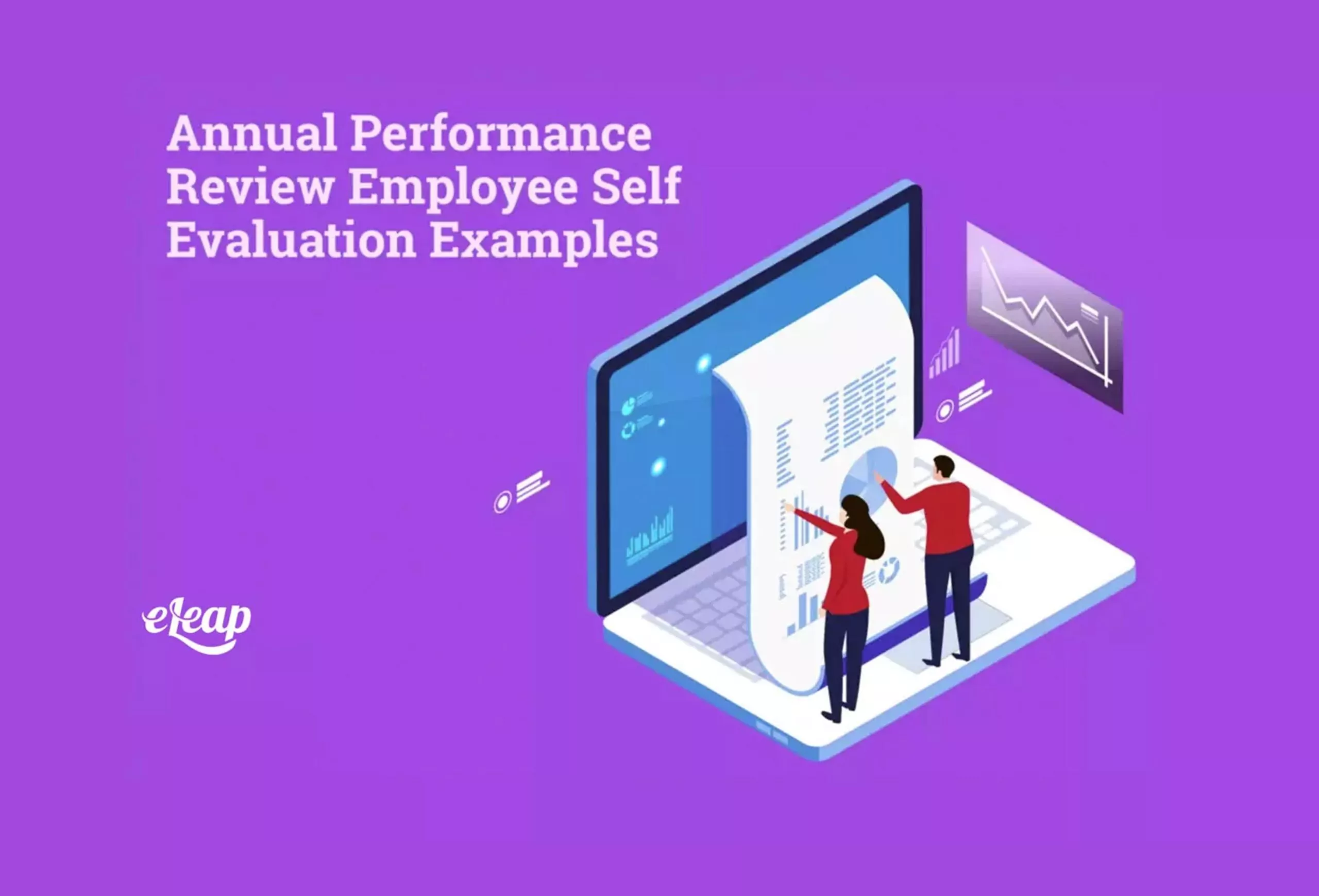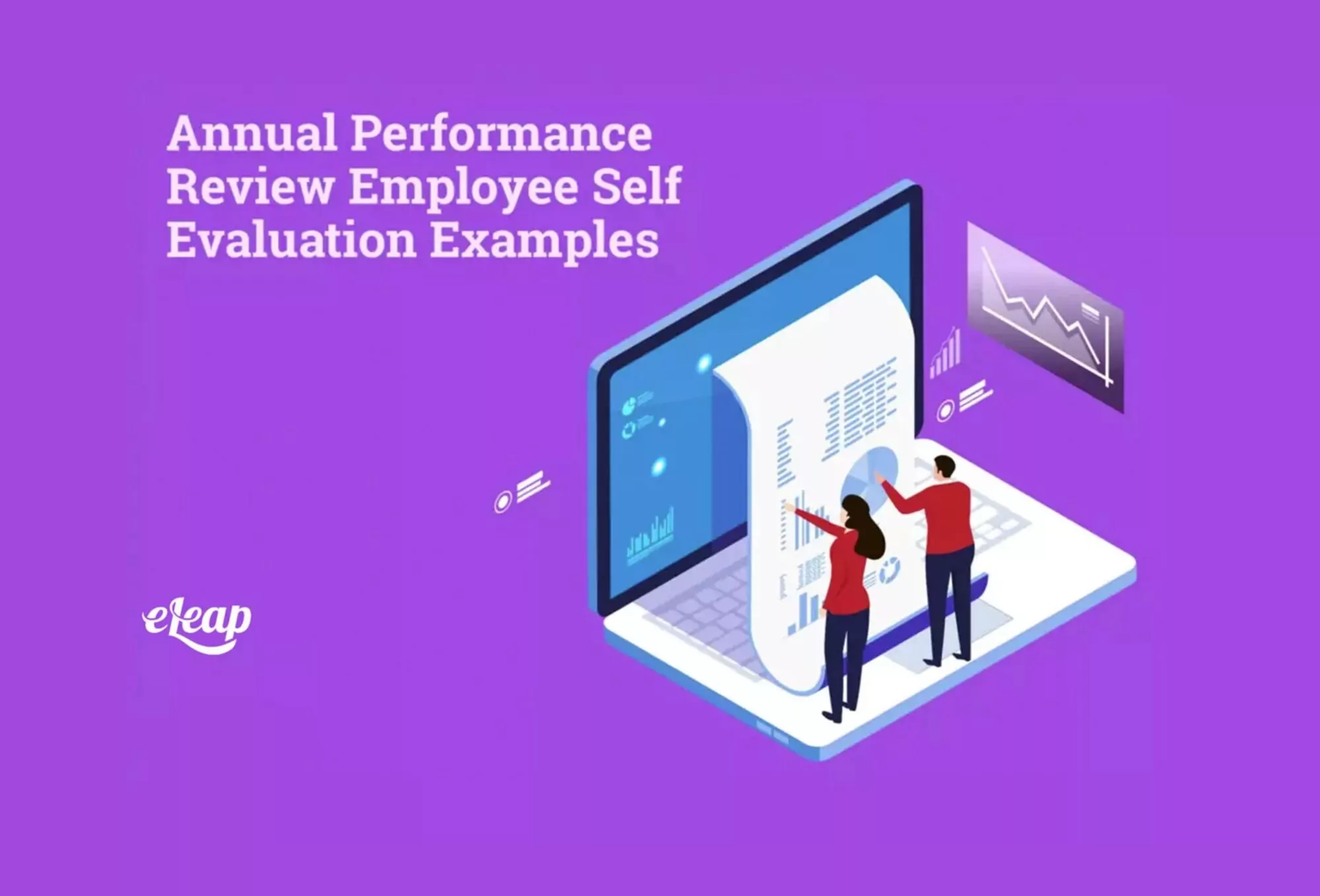Annual Performance Review Employee Self Evaluation Examples
A Guide To Mastering Your Self-Evaluation

It’s time for your annual employee performance review, and your supervisor has sent out self-evaluations for everyone to complete. You’ve taken a deep breath and pushed back down that sudden burst of anxiety, but you still know this means you’ll have to look back over the past year and prove your worth to the company. Oh, and don’t forget to be humble. We got your back. Here are some annual performance review employee self-evaluation examples. Explore how eLeaP’s Performance Management Platform can simplify evaluations, boost productivity, and drive measurable results.
If this is all too much, don’t worry, you’ve got this. And we’re here to help. We’re going to walk you through each step with some annual performance review employee self-evaluation examples to make it easy. That way, you can go home today without stopping by the grocers to pick up a tub of comfort ice cream and a bottle of emotional support wine. Download the ebook “The Skeptics Guide to Performance Management“ and get started on improving your performance management process.

Do Some Prep-Work
Taking the time to do some behind-the-scenes work can make conducting your self-evaluation much easier. If you know that the annual performance review season is coming up, getting yourself set up with the right documents, notes on where you’ve succeeded and struggled, and any customer or manager acclamations will prepare you in advance.
Even if your supervisor sprung the performance review on you at the last minute, you can still take a few steps to prepare a positive self-evaluation.
1. Understand how management will use it
Knowing the purpose behind a self-evaluation will help you to frame it appropriately. Self-evaluations are usually given ahead of a performance review, but your boss might be using them to evaluate who’s ready for a raise/promotion or possibly even gauge your perspective of a poor quarter.
2. Think about where you succeeded
It is important to be humble in your self-evaluation, but don’t sell yourself too short. Think of a few accomplishments you’ve achieved in the last year. Come up with a list of some successes. At first, be as over the top as possible. Once you have a detailed list of wins, you can then edit it down to shape.
3. Be prepared to talk about your setbacks
Look, no one is perfect, and if you go into your performance review raving about yourself, your employer will have some sorry news for you. Humility is important in any position, so knowing and understanding where you could have performed better is a great place to start with your self-evaluation.
Getting It Done
Once you have prepared everything you need to fill out your self-evaluation, it’s time to sit down and write. Follow these annual performance review employee self-evaluation examples, and you’ll end up with a self-appraisal that’s positive without going too far, and that highlights your benefit to the organization.
1. Time to be humble
Remember that list of wins you prepared? It’s time to really whittle that thing down. You need to pick the two or three times you felt truly successful in the past year and give exact details of how your victory benefited the company. Show your work that was truly the best.
2. Keep your company’s objectives in mind
In your last annual performance review, what were your boss’s expectations and goals for you? Remember to link back to those goals and show how your efforts helped the company reach its ultimate objective. Give examples when possible.
3. Don’t be too self-effacing
Humility is important, but don’t get too down on yourself. The key to an effective self-evaluation is how you frame yourself. Even if you botched a project, you don’t have to go into the performance review ready for the ax. Bring attention to where you struggled but also admit that you want to improve. The point of a performance evaluation is to find ways to grow.
Avoid overly negative words like failure, as these will frame you as a failure, not just your past progress. Be specific about what happened. If you missed a deadline, say so. If a miscommunication resulted in the wrong outcome, say so. Be honest without being self-sabotaging.
4. Take responsibility
What is it we’re writing? A self-evaluation. Even if there were problems with your team, this isn’t the time to lay blame. Take responsibility for your failures, and if there were legitimate problems with a co-worker, bring those to the attention of your supervisor at another time.
5. Focus on the future
Again, a performance review aims to find new ways to develop and grow in your career. Frame your setbacks as starting points for future development. To grow, you have to be willing to ask for help. Maybe you think your performance deserves recognition. This is the time to prove why you deserve that raise. Your boss might agree if you have the data to back it up.
A Few Last Tips
Before we leave you to complete your self-evaluation, we wanted to give a few last pointers. Remember all those documents we told you to prepare beforehand? Don’t forget to use them. If you have positive feedback from other managers or from customers, it can really bolster your performance review.
Also, although we said making lists was a good idea, don’t just copy them into your self-evaluation. Fill out the details so your employer understands what you’re talking about.
Beyond that, just remember to edit your work or have a friend review it. Getting a second opinion is an excellent way to spot mistakes you wouldn’t normally see.
Conclusion
Now that you’ve followed our annual performance review employee self-evaluation examples, it’s time to write your self-evaluation. Remember that this is your one for the year, and once it’s done, you don’t have to worry about it again for a few months. Be organized, structure your thoughts and documents, and remember to be honest, humble, and, most importantly, yourself. Follow these guidelines, and you should walk away with a pretty stellar annual performance review self-evaluation. We welcome you to contact us if you’re looking for other ways to boost your organization’s human resources department. We can provide you with more information regarding performance reviews and general performance management. Lastly, start a 30-day free trial of eLeaP to learn more about effective performance reviews.